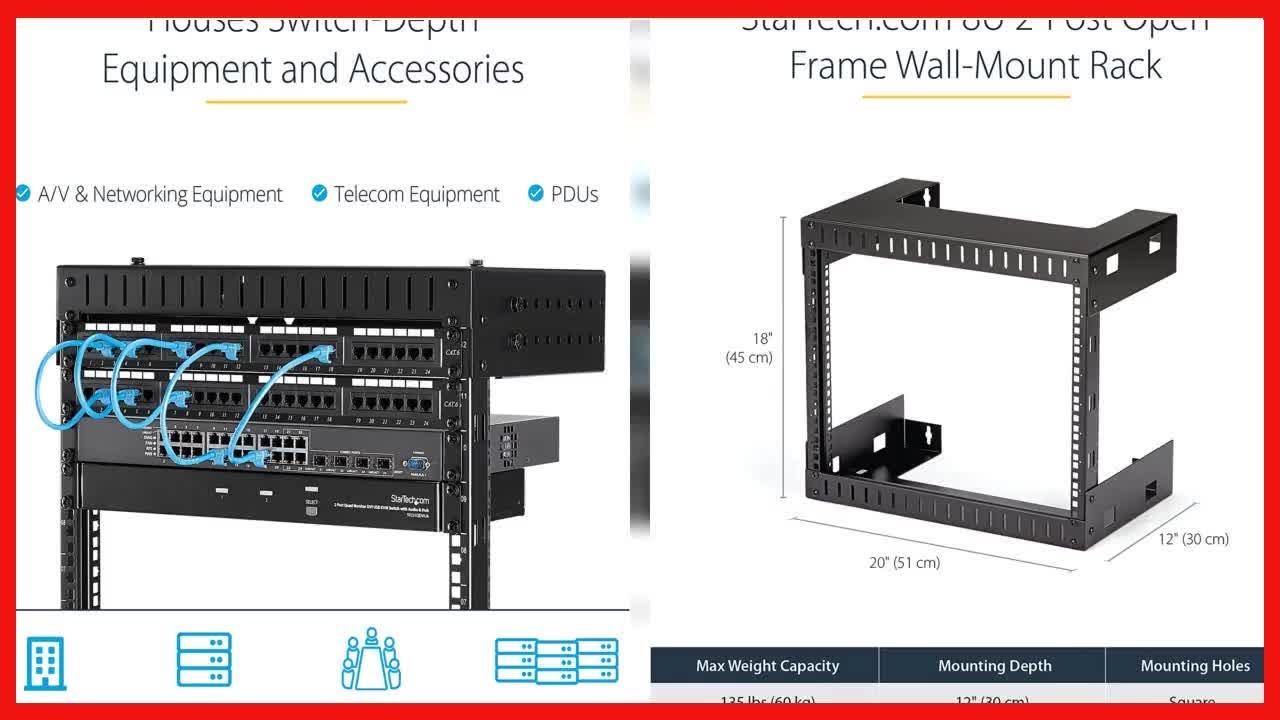All around Meta’s Menlo Park campus, cameras stared at me. I’m not talking about security cameras or my fellow reporters’ DSLRs. I’m not even talking about smartphones. I mean Ray-Ban and Meta’s smart glasses, which Meta hopes we’ll all — one day, in some form — wear.
Technology
Welcome to Meta’s future, where everyone wears cameras

I visited Meta for this year’s Connect conference, where just about every hardware product involved cameras. They’re on the Ray-Ban Meta smart glasses that got a software update, the new Quest 3S virtual reality headset, and Meta’s prototype Orion AR glasses. Orion is what Meta calls a “time machine”: a functioning example of what full-fledged AR could look like, years before it will be consumer-ready.
But on Meta’s campus, at least, the Ray-Bans were already everywhere. It was a different kind of time machine: a glimpse into CEO Mark Zuckerberg’s future world where glasses are the new phones.
I’m conflicted about it.
Meta really wants to put cameras on your face. The glasses, which follow 2021’s Ray-Ban Stories, are apparently making inroads on that front, as Zuckerberg told The Verge sales are going “very well.” They aren’t full-fledged AR glasses since they have no screen to display information, though they’re becoming more powerful with AI features. But they’re perfect for what the whole Meta empire is built on: encouraging people to share their lives online.
The glasses come in a variety of classic Ray-Ban styles, but for now, it’s obvious users aren’t just wearing glasses. As I wandered the campus, I spotted the telltale signs on person after person: two prominent circle cutouts at the edges of their glasses, one for a 12MP ultrawide camera and the other for an indicator light.
This light flashes when a user is taking photos and videos, and it’s generally visible even in sunlight. In theory, that should have put my mind at ease: if the light wasn’t on, I could trust nobody was capturing footage of me tucking into some lunch before my meetings.
But as I talked with people around campus, I was always slightly on edge. I found myself keenly aware of those circles, checking to see if somebody was filming me when I wasn’t paying attention. The mere potential of a recording would distract me from conversations, inserting a low hum of background anxiety.
When I put a pair on for myself, the situation changed
Then, when I put a pair on for myself, the situation suddenly changed. As a potential target of recording, I’d been hesitant, worried I might be photographed or filmed as a byproduct of making polite eye contact. With the glasses on my own face, though, I felt that I should be recording more. There’s something really compelling about the experience of a camera right at the level of your eyes. By just pressing a button on the glasses, I could take a photo or video of anything I was seeing at exactly the angle I was seeing it. No awkward fumble of pulling out my phone and hoping the moment lasted. There might be no better way to share my reality with other people.
Meta’s smart glasses have been around for a few years now, and I’m hardly the first person — or even the first person at The Verge — to be impressed by them. But this was the first time I’d seen these glasses not as early adopter tech, but as a ubiquitous product like a phone or smartwatch. I got a hint of how this seamless recording would work at scale, and the prospect is both exciting and terrifying.
The camera phone was a revolution in its own right, and we’re still grappling with its social effects. Nearly anyone can now document police brutality or capture a fleeting funny moment, but also take creepshots and post them online or (a far lesser offense, to be clear) annoy people at concerts. What will happen when even the minimal friction of pulling a phone out drops away, and billions of people can immediately snap a picture of anything they see?
Personally, I can see how incredibly useful this would be to capture candid photos of my new baby, who is already starting to recognize when a phone is taking a picture of her. But it’s not hard to imagine far more malicious uses. Sure, you might think that we all got used to everyone pointing their phone cameras at everything, but I’m not exactly sure that’s a good thing; I don’t like that there’s a possibility I end up in somebody’s TikTok just because I stepped outside the house. (The rise of sophisticated facial recognition makes the risks even greater.) With ubiquitous glasses-equipped cameras, I feel like there’s an even greater possibility that my face shows up somewhere on the internet without my permission.
There are also clear risks to integrating cameras into what is, for many people, a nonnegotiable vision aid. If you already wear glasses and switch to prescription smart glasses, you’ll either have to carry a low-tech backup or accept that they’ll stay on in some potentially very awkward places, like a public bathroom. The current Ray-Ban Meta glasses are largely sunglasses, so they’re probably not most people’s primary set. But you can get them with clear and transition lenses, and I bet Meta would like to market them more as everyday specs.
Of course, there’s no guarantee most people will buy them. The Ray-Ban Meta glasses are pretty good gadgets now, but I was at Meta’s campus meeting Meta employees to preview Meta hardware for a Meta event. It’s not surprising Meta’s latest hardware was commonplace, and it doesn’t necessarily tell us much about what people outside that world want.
Camera glasses have been just over the horizon for years now. Remember how magical I said taking pictures of what’s right in front of your eyes is? My former colleague Sean O’Kane relayed almost the exact same experience with Snap Spectacles back in 2016.
But Meta is the first company to make a credible play for mainstream acceptance. They’re a lot of fun — and that’s what scares me a little.
Servers computers
HP ProLiant DL580 Gen7 Rack Server Overview, Specifications & Configuration

Buy Refurbished HP ProLiant DL580 G7 – https://www.serverbasket.com/shop/used-hp-proliant-dl580-g7-servers/
For Complete Information on HP ProLiant DL580 G7 Rack Server Contact Us-
Website: https://www.serverbasket.com
Email: sales@serverbasket.com
Toll-Free No: 1800 123 1346
WhatsApp: +91 8886001858
——————————————————————————————————————————————————
Subscribe To Our Channel @ https://www.youtube.com/channel/UCO8bZFM0NzVsjG7Ss83LvOQ
——————————————————————————————————————————————————
Check out the Powerful HP ProLiant DL580 G7
Purchase the HP ProLiant DL580 G7 Server at lowest price in India from Server Basket before the deal ends. It is the best choice of large scale computing, you can use virtualize tons of workloads with this server. The DL580 G7 best suits for large databases applications that need a large memory, scale-up computing processing, and I/O intensive applications. The Server supports multiple operating systems, features good memory and storage options.
——————————————————————————————————————————————————
Key Benefits:
– Enhance Performance and scalability
– Best Price in Market
– Maintain High Server Availability With Build-in Advanced RAS
Feature
– Virtualization Ready
– Strong Design
– Easy To USe
– Strong Design
– Instant Delivery
– Quick Support
HP ProLiant DL580 G7 Specifications:
CPU Capacity:
– Supports 4 Processors
– Intel® Xeon® E7-4800,E7-8800,X7500,L7500 Series Processors
– Single CPU: 10 Cores Max
– Quad CPU: 40 Cores Max
– Max VCPUs: 76 VCPUs
RAM Capacity:
– Inbuilt 64 DIMM Slots
– 32 GB Max Memory Per DIMM Slot
– 2 TB GB Maximum Memory Capacity
– Supported Technology: DDR3 Memory
Storage Capacity:
-SFF SAS 9.6TB 8 x 1.2TB
-SFF SATA 8.0TB 8 x 1TB
-SFF SSD 960GB 8 x 120GB
-SFF SAS SSD 6.4TB 8 x 800GB
-SFF SATA SSD 3.2TB 8 x 400GB
Max potential Storage: 9.6 TB
Storage Controller:
-Base Models HP Smart Array P410i/512 MB FBWC Controller
-High-Performance Models HP Smart Array P410i/1G FBWC Controller
Power Supply:
-HP 1200 W Common slot platinum hot plug power supply kit
-HP 1200 W Common slot silver hot plug power supply kit
Operating System:
-Microsoft Windows Server
-Red Hat Enterprise Linux (RHEL)
-SUSE Linux Enterprise Server (SLES)
-Oracle Solaris
-VMware
-Citrix XenServer
——————————————————————————————————————————————————
Check out the Powerful HP ProLiant DL580 G7 from Server Basket.
#HPProLiantDL580G7 #DL580G7 #ServerBasket .
source
Technology
PS5 Pro hands-on and Meta’s wild Orion AR glasses

We’ve finally had a chance to try the PlayStation 5 Pro and Engadget’s Jessica Conditt has come away impressed. In this episode, Devindra and Jess chat about what the PS5 Pro does well, and discuss who a $700 console is actually meant for. Also, coming off of Meta Connect 2024, Karissa Bell joins to chat about her time with the Quest 3S, as well as her thoughts about Meta’s Orion AR headset and AI plans.
Listen below or subscribe on your podcast app of choice. If you’ve got suggestions or topics you’d like covered on the show, be sure to email us or drop a note in the comments! And be sure to check out our other podcast, Engadget News!
This embedded content is not available in your region.
Subscribe!
Topics
-
Jessica Conditt’s PS5 Pro hands on: 60fps makes so much difference – 0:42
-
Karissa Bell’s dispatch from Meta Connect 2024 – 27:04
-
Meta Quest 3S: an impressive and affordable step forward in consumer VR – 28:55
-
Orion AR glasses are a big swing, just don’t expect to buy them any time soon – 32:50
-
Ray-Ban Meta smart glasses – 38:28
-
Pop culture picks – 58:24
Livestream
Credits
Host: Devindra Hardawar
Guests: Jessica Conditt and Karissa Bell
Producer: Ben Ellman
Music: Dale North and Terrence O’Brien
This article contains affiliate links; if you click such a link and make a purchase, we may earn a commission.
Technology
Building and securing a governed AI infrastructure for the future

Join our daily and weekly newsletters for the latest updates and exclusive content on industry-leading AI coverage. Learn More
This article is part of a VB Special Issue called “Fit for Purpose: Tailoring AI Infrastructure.” Catch all the other stories here.
Unlocking AI’s potential to deliver greater efficiency, cost savings and deeper customer insights requires a consistent balance between cybersecurity and governance.
AI infrastructure must be designed to adapt and flex to a business’ changing directions. Cybersecurity must protect revenue and governance must stay in sync with compliance internally and across a company’s footprint.
Any business looking to scale AI safely must continually look for new ways to strengthen the core infrastructure components. Just as importantly, cybersecurity, governance and compliance must share a common data platform that enables real-time insights.
“AI governance defines a structured approach to managing, monitoring and controlling the effective operation of a domain and human-centric use and development of AI systems,” Venky Yerrapotu, founder and CEO of 4CRisk, told VentureBeat. “Packaged or integrated AI tools do come with risks, including biases in the AI models, data privacy issues and the potential for misuse.”
A robust AI infrastructure makes audits easier to automate, helps AI teams find roadblocks and identifies the most significant gaps in cybersecurity, governance and compliance.
>>Don’t miss our special issue: Fit for Purpose: Tailoring AI Infrastructure.<<
“With little to no current industry-approved governance or compliance frameworks to follow, organizations must implement the proper guardrails to innovate safely with AI,” Anand Oswal, SVP and GM of network security at Palo Alto Networks, told VentureBeat. “The alternative is too costly, as adversaries are actively looking to exploit the newest path of least resistance: AI.”
Defending against threats to AI infrastructure
While malicious attackers’ goals vary from financial gain to disrupting or destroying conflicting nations’ AI infrastructure, all seek to improve their tradecraft. Malicious attackers, cybercrime gangs and nation-state actors are all moving faster than even the most advanced enterprise or cybersecurity vendor.
“Regulations and AI are like a race between a mule and a Porsche,” Etay Maor, chief security strategist at Cato Networks, told VentureBeat. “There’s no competition. Regulators always play catch-up with technology, but in the case of AI, that’s particularly true. But here’s the thing: Threat actors don’t play nice. They’re not confined by regulations and are actively finding ways to jailbreak the restrictions on new AI tech.”
Chinese, North Korean and Russian-based cybercriminal and state-sponsored groups are actively targeting both physical and AI infrastructure and using AI-generated malware to exploit vulnerabilities more efficiently and in ways that are often undecipherable to traditional cybersecurity defenses.
Security teams are still at risk of losing the AI war as well-funded cybercriminal organizations and nation-states target AI infrastructures of countries and companies alike.
One effective security measure is model watermarking, which embeds a unique identifier into AI models to detect unauthorized use or tampering. Additionally, AI-driven anomaly detection tools are indispensable for real-time threat monitoring.
All of the companies VentureBeat spoke with on the condition of anonymity are actively using red teaming techniques. Anthropic, for one, proved the value of human-in-the-middle design to close security gaps in model testing.
“I think human-in-the-middle design is with us for the foreseeable future to provide contextual intelligence, human intuition to fine-tune an [large language model] LLM and to reduce the incidence of hallucinations,” Itamar Sher, CEO of Seal Security, told VentureBeat.
Models are the high-risk threat surfaces of an AI infrastructure
Every model released into production is a new threat surface an organization needs to protect. Gartner’s annual AI adoption survey found that 73% of enterprises have deployed hundreds or thousands of models.
Malicious attackers exploit weaknesses in models using a broad base of tradecraft techniques. NIST’s Artificial Intelligence Risk Management Framework is an indispensable document for anyone building AI infrastructure and provides insights into the most prevalent types of attacks, including data poisoning, evasion and model stealing.
AI Security writes, “AI models are often targeted through API queries to reverse-engineer their functionality.”
Getting AI infrastructure right is also a moving target, CISOs warn. “Even if you’re not using AI in explicitly security-centric ways, you’re using AI in ways that matter for your ability to know and secure your environment,” Merritt Baer, CISO at Reco, told VentureBeat.
Put design-for-trust at the center of AI infrastructure
Just as an operating system has specific design goals that strive to deliver accountability, explainability, fairness, robustness and transparency, so too does AI infrastructure.
Implicit throughout the NIST framework is a design-for-trust roadmap, which offers a practical, pragmatic definition to guide infrastructure architects. NIST emphasizes that validity and reliability are must-have design goals, especially in AI infrastructure, to deliver trustworthy, reliable results and performance.

Source: NIST, January 2023, DOI: 10.6028/NIST.AI.100-1.
The critical role of governance in AI Infrastructure
AI systems and models must be developed, deployed and maintained ethically, securely and responsibly. Governance must be designed to deliver workflows, visibility and real-time updates on algorithmic transparency, fairness, accountability and privacy. The cornerstone of strong governance starts when models are continuously monitored, audited and aligned with societal values.
Governance frameworks should be integrated into AI infrastructure from the first phases of development. “Governance by design” embeds these principles into the process.
“Implementing an ethical AI framework requires focus on security, bias and data privacy aspects not only during the designing process of the solution but also throughout the testing and validation of all the guardrails before deploying the solutions to end users,” WinWire CTO Vineet Arora told VentureBeat.
Designing AI infrastructures to reduce bias
Identifying and reducing biases in AI models is critical to delivering accurate, ethically sound results. Organizations need to step up and take accountability for how their AI infrastructures monitor, control and improve to reduce and eliminate biases.
Organizations that take accountability for their AI infrastructures rely on adversarial debiasing train models to minimize the relationship between protected attributes (including race or gender) and outcomes, reducing the risk of discrimination. Another approach is resampling training data to ensure a balanced representation relevant to different industries.
“Embedding transparency and explainability into the design of AI systems enables organizations to understand better how decisions are being made, allowing for more effective detection and correction of biased outputs,” says NIST. Providing transparent insights into how AI models make decisions allows organizations to better detect, correct and learn from biases.
How IBM is managing AI governance
IBM’s AI Ethics Board oversees the company’s AI infrastructure and AI projects, ensuring each stays ethically compliant with industry and internal standards. IBM initially established a governance framework to include what they’re calling “focal points,” or mid-level executives with AI expertise, who review projects in development to ensure compliance with IBM’s Principles of Trust and Transparency.
IBM says this framework helps reduce and control risks at the project level, alleviating risks to AI infrastructures.
Christina Montgomery, IBM’s chief privacy and trust officer, says, “Our AI ethics board plays a critical role in overseeing our internal AI governance process, creating reasonable internal guardrails to ensure we introduce technology into the world responsibly and safely.”
Governance frameworks must be embedded in AI infrastructure from the design phase. The concept of governance by design ensures that transparency, fairness and accountability are integral parts of AI development and deployment.
AI infrastructure must deliver explainable AI
Closing gaps between cybersecurity, compliance and governance is accelerating across AI infrastructure use cases. Two trends emerged from VentureBeat research: agentic AI and explainable AI. Organizations with AI infrastructure are looking to flex and adapt their platforms to make the most of each.
Of the two, explainable AI is nascent in providing insights to improve model transparency and troubleshoot biases. “Just as we expect transparency and rationale in business decisions, AI systems should be able to provide clear explanations of how they reach their conclusions,” Joe Burton, CEO of Reputation, told VentureBeat. “This fosters trust and ensures accountability and continuous improvement.”
Burton added: “By focusing on these governance pillars — data rights, regulatory compliance, access control and transparency — we can leverage AI’s capabilities to drive innovation and success while upholding the highest standards of integrity and responsibility.”
Source link
Servers computers
42U Floor Mount Server Rack 800×1000

DATASTACK Floor Standing Enclosure’s designed for Data Centers, Servers, Networking, Audio Video, Telecom and Lab applications.
Enclosures are fabricated out of CRCA steel, CNC Laser cutting bended, welded and powder coated with high quality standards. Configuration for standard racks is frame with
4 pillars of multi fold profile welded to top and bottom panels. 2 Pair depth rails to additionally support the enclosure.
Removable side panels, partially vented for better air circulation. Openings / Cut outs for field cable entry from top & bottom of the rack. Vented top cover with fan mounting provision, Front glass Or perforated metal door with lock and key. Back vented, perforated or perforated dual metal door with lock and key.
Free standing Design with 4 Nos castor wheels, 2 no’s with breaks & 2no’s without breaks. Levelers or plinth can be provided on request.
Floor racks are available in 17U to 42U variants with 600mm, 800mm, 1000mm & 1200mm depth and 600mm, 800mm, 900mm, 1000mm width configurations.
source
Technology
Never Let Go had a lot of promise but I’m tired of bad Hollywood endings

Full spoilers for Never Let Go follow.
Never Let Go is the latest movie by hit production company Lionsgate, which is a studio known for the huge horror franchise Saw, as well as popular action franchises The Hunger Games and John Wick (which recently got a trailer for Ballerina). Although this creepy survival horror hit, which gave similar vibes to A Quiet Place, had potential, it really ran out of steam in the third act.
It is annoying that this appears to be a common occurrence with new movies. While I’m not entirely opposed to mystery and questions, sometimes it feels like the script was missing something and the result might leave audiences disappointed, and hungry for something they’ll never get to have. That was definitely the case with Never Let Go, which teased this great, evil threat and then fizzled out at the very end.
Movies shouldn’t have to over-explain what’s going on, but it’s nice when they give us something to work with. For me, Never Let Go was ambiguous to the point of being frustrating, leaving me with more questions than I had going in, which is never a good sign.
The evil, which is just named ‘The Evil’, is this apparent great threat that has taken over the world and leaving Momma (even she doesn’t have a name) and her two boys as the only survivors. By the end, we find out this is a lie, and it literally does not elaborate beyond that. The boys go off into this civilization they’ve been sheltered from their whole lives, and that’s it. We don’t find out what it is, if it was all in their mother’s head or if it’s some demonic figure isolated to their remote cabin.
The boys could not see The Evil, but it still doesn’t answer why it was so central to their lives for all these years. A lot of it didn’t add up and despite the good performances and the creepy atmosphere, the story was lacking compared to the best horror movies.
Should we completely do away with ambiguous endings?

No, not entirely, but they do seem to be happening in abundance and the result is not always good. But as we’ve seen throughout film history, it can be done very well. Take a look at Inception – one of the best Christopher Nolan movies – and its now iconic totem ending. We never get to find out if Cobb was in the real world or not, but given the richness of the hours that preceded that final shot, the ending is memorable. Frustrating, sure, but it’s great.
Never Let Go wasn’t able to reach those heights as we barely knew anything about the threat to begin with. There was little to keep the audience engaged, if anything I found myself braced for another jump scare where Momma would see another manifestation of The Evil but that was more to do with loud audio cues than me being scared of the antagonist. I don’t really care if I know nothing about what’s jumping out to scare me in the first place. Lore building is important.
Endings are tricky, but many big-budget movies are really struggling to stick the landing. A prime example of that is Lionsgate’s abysmal Borderlands, which insulted video game fans everywhere and then fizzled out into an unsatisfying conclusion. Not ambiguous, just boring. Can you tell I absolutely loved it? In all seriousness, if you want to read my takedown of Borderlands, here’s why I called it the death of good video game adaptations.
It’s not all bleak though, 2024 has seen plenty of great movies, and A24 in particular is leading the charge with recent movies like I Saw the TV Glow and MaXXXine, which was one of five A24 movies I couldn’t wait to watch in 2024 – both of which nailed that all-important finale. I just wish the bigger names would follow suit.
You might also like
Servers computers
Great product – StarTech.com 8U 19" Wall Mount Network Rack – 12" Deep 2 Post Open Frame Server Roo

Great product – StarTech.com 8U 19″ Wall Mount Network Rack – 12″ Deep 2 Post Open Frame Server Room Rack for Data
Amazon Product Link: Link: http://amazon.com/dp/B001VSR9SG/?tag=thu68-20
STURDY & CONVENIENT: 8U 19″ Open Frame wall mount network rack with 12″ mounting depth is EIA/ECA-310 compatible & supports like patch panels, shelves and unmanaged switches
HEAVY DUTY: This heavy duty 2 post open frame rack supports unobstructed airflow & is easy to install with a durable design made from SPCC cold-rolled steel with support for up to 135lbs of equipment
EASY ASSEMBLY: The rack ships flat packed with ISTA-6 certified packaging to ensure complete and undamaged delivery and also features comprehensive assembly instructions
ACCESSORIES INCLUDED: The wall mount server room/ computer/communication/AV/IT equipment rack includes a complete set of screws and cage nuts to securely mount all of your equipment in the rack
Top reviews from the United States
The Rack of Racks
This rack will hold all of your networking equipment perfectly fine, it is meddlesome to assemble as the screws don’t line up and will require some brute for.
source
-

 Womens Workouts6 days ago
Womens Workouts6 days ago3 Day Full Body Women’s Dumbbell Only Workout
-

 Technology2 weeks ago
Technology2 weeks agoWould-be reality TV contestants ‘not looking real’
-

 News7 days ago
News7 days agoOur millionaire neighbour blocks us from using public footpath & screams at us in street.. it’s like living in a WARZONE – WordupNews
-

 Science & Environment1 week ago
Science & Environment1 week ago‘Running of the bulls’ festival crowds move like charged particles
-

 Science & Environment1 week ago
Science & Environment1 week agoMaxwell’s demon charges quantum batteries inside of a quantum computer
-

 Science & Environment1 week ago
Science & Environment1 week agoSunlight-trapping device can generate temperatures over 1000°C
-

 Science & Environment1 week ago
Science & Environment1 week agoHyperelastic gel is one of the stretchiest materials known to science
-

 Science & Environment2 weeks ago
Science & Environment2 weeks agoHow to unsnarl a tangle of threads, according to physics
-

 News2 weeks ago
News2 weeks agoYou’re a Hypocrite, And So Am I
-

 Science & Environment1 week ago
Science & Environment1 week agoHow to wrap your mind around the real multiverse
-

 Science & Environment1 week ago
Science & Environment1 week agoPhysicists are grappling with their own reproducibility crisis
-

 Science & Environment2 weeks ago
Science & Environment2 weeks agoITER: Is the world’s biggest fusion experiment dead after new delay to 2035?
-

 Science & Environment1 week ago
Science & Environment1 week agoLiquid crystals could improve quantum communication devices
-

 Sport1 week ago
Sport1 week agoJoshua vs Dubois: Chris Eubank Jr says ‘AJ’ could beat Tyson Fury and any other heavyweight in the world
-

 Science & Environment1 week ago
Science & Environment1 week agoQuantum ‘supersolid’ matter stirred using magnets
-

 Science & Environment2 weeks ago
Science & Environment2 weeks agoWhy this is a golden age for life to thrive across the universe
-

 Science & Environment1 week ago
Science & Environment1 week agoQuantum forces used to automatically assemble tiny device
-

 Science & Environment2 weeks ago
Science & Environment2 weeks agoCaroline Ellison aims to duck prison sentence for role in FTX collapse
-

 Science & Environment1 week ago
Science & Environment1 week agoNuclear fusion experiment overcomes two key operating hurdles
-

 CryptoCurrency1 week ago
CryptoCurrency1 week agoCardano founder to meet Argentina president Javier Milei
-

 Science & Environment2 weeks ago
Science & Environment2 weeks agoNerve fibres in the brain could generate quantum entanglement
-

 News1 week ago
News1 week agoIsrael strikes Lebanese targets as Hizbollah chief warns of ‘red lines’ crossed
-

 Womens Workouts1 week ago
Womens Workouts1 week agoBest Exercises if You Want to Build a Great Physique
-

 Science & Environment2 weeks ago
Science & Environment2 weeks agoTime travel sci-fi novel is a rip-roaringly good thought experiment
-

 Science & Environment2 weeks ago
Science & Environment2 weeks agoLaser helps turn an electron into a coil of mass and charge
-

 CryptoCurrency1 week ago
CryptoCurrency1 week agoDZ Bank partners with Boerse Stuttgart for crypto trading
-

 CryptoCurrency1 week ago
CryptoCurrency1 week agoEthereum is a 'contrarian bet' into 2025, says Bitwise exec
-

 Womens Workouts1 week ago
Womens Workouts1 week agoEverything a Beginner Needs to Know About Squatting
-

 Science & Environment7 days ago
Science & Environment7 days agoMeet the world's first female male model | 7.30
-

 News2 weeks ago
News2 weeks ago▶️ Media Bias: How They Spin Attack on Hezbollah and Ignore the Reality
-

 Science & Environment1 week ago
Science & Environment1 week agoHow do you recycle a nuclear fusion reactor? We’re about to find out
-

 CryptoCurrency1 week ago
CryptoCurrency1 week agoBitcoin miners steamrolled after electricity thefts, exchange ‘closure’ scam: Asia Express
-

 CryptoCurrency1 week ago
CryptoCurrency1 week agoDorsey’s ‘marketplace of algorithms’ could fix social media… so why hasn’t it?
-

 CryptoCurrency1 week ago
CryptoCurrency1 week agoRedStone integrates first oracle price feeds on TON blockchain
-

 CryptoCurrency1 week ago
CryptoCurrency1 week agoBitcoin bulls target $64K BTC price hurdle as US stocks eye new record
-

 CryptoCurrency1 week ago
CryptoCurrency1 week agoBlockdaemon mulls 2026 IPO: Report
-

 News1 week ago
News1 week agoBrian Tyree Henry on voicing young Megatron, his love for villain roles
-

 CryptoCurrency1 week ago
CryptoCurrency1 week agoCoinbase’s cbBTC surges to third-largest wrapped BTC token in just one week
-

 News7 days ago
News7 days agoFour dead & 18 injured in horror mass shooting with victims ‘caught in crossfire’ as cops hunt multiple gunmen
-

 Womens Workouts6 days ago
Womens Workouts6 days ago3 Day Full Body Toning Workout for Women
-

 Travel5 days ago
Travel5 days agoDelta signs codeshare agreement with SAS
-

 Politics4 days ago
Politics4 days agoHope, finally? Keir Starmer’s first conference in power – podcast | News
-

 Science & Environment1 week ago
Science & Environment1 week agoQuantum time travel: The experiment to ‘send a particle into the past’
-

 CryptoCurrency1 week ago
CryptoCurrency1 week agoCrypto scammers orchestrate massive hack on X but barely made $8K
-

 CryptoCurrency1 week ago
CryptoCurrency1 week agoLow users, sex predators kill Korean metaverses, 3AC sues Terra: Asia Express
-

 CryptoCurrency1 week ago
CryptoCurrency1 week ago‘No matter how bad it gets, there’s a lot going on with NFTs’: 24 Hours of Art, NFT Creator
-

 CryptoCurrency1 week ago
CryptoCurrency1 week agoSEC asks court for four months to produce documents for Coinbase
-

 Sport1 week ago
Sport1 week agoUFC Edmonton fight card revealed, including Brandon Moreno vs. Amir Albazi headliner
-
Business1 week ago
How Labour donor’s largesse tarnished government’s squeaky clean image
-

 Technology1 week ago
Technology1 week agoiPhone 15 Pro Max Camera Review: Depth and Reach
-

 News1 week ago
News1 week agoBrian Tyree Henry on voicing young Megatron, his love for villain roles
-

 Womens Workouts1 week ago
Womens Workouts1 week agoKeep Your Goals on Track This Season
-

 Science & Environment2 weeks ago
Science & Environment2 weeks agoA slight curve helps rocks make the biggest splash
-

 Science & Environment1 week ago
Science & Environment1 week agoWhy we need to invoke philosophy to judge bizarre concepts in science
-

 Science & Environment1 week ago
Science & Environment1 week agoFuture of fusion: How the UK’s JET reactor paved the way for ITER
-

 News1 week ago
News1 week agoChurch same-sex split affecting bishop appointments
-

 Science & Environment1 week ago
Science & Environment1 week agoTiny magnet could help measure gravity on the quantum scale
-

 Technology1 week ago
Technology1 week agoFivetran targets data security by adding Hybrid Deployment
-

 CryptoCurrency1 week ago
CryptoCurrency1 week ago$12.1M fraud suspect with ‘new face’ arrested, crypto scam boiler rooms busted: Asia Express
-

 CryptoCurrency1 week ago
CryptoCurrency1 week agoDecentraland X account hacked, phishing scam targets MANA airdrop
-

 CryptoCurrency1 week ago
CryptoCurrency1 week agoCertiK Ventures discloses $45M investment plan to boost Web3
-

 CryptoCurrency1 week ago
CryptoCurrency1 week agoBeat crypto airdrop bots, Illuvium’s new features coming, PGA Tour Rise: Web3 Gamer
-

 CryptoCurrency1 week ago
CryptoCurrency1 week agoTelegram bot Banana Gun’s users drained of over $1.9M
-

 CryptoCurrency1 week ago
CryptoCurrency1 week ago‘Silly’ to shade Ethereum, the ‘Microsoft of blockchains’ — Bitwise exec
-
Business1 week ago
Thames Water seeks extension on debt terms to avoid renationalisation
-
Politics1 week ago
‘Appalling’ rows over Sue Gray must stop, senior ministers say | Sue Gray
-

 Womens Workouts1 week ago
Womens Workouts1 week agoHow Heat Affects Your Body During Exercise
-

 News7 days ago
News7 days agoWhy Is Everyone Excited About These Smart Insoles?
-

 Politics2 weeks ago
Politics2 weeks agoTrump says he will meet with Indian Prime Minister Narendra Modi next week
-

 Technology2 weeks ago
Technology2 weeks agoCan technology fix the ‘broken’ concert ticketing system?
-

 Health & fitness2 weeks ago
Health & fitness2 weeks agoThe secret to a six pack – and how to keep your washboard abs in 2022
-

 Science & Environment1 week ago
Science & Environment1 week agoBeing in two places at once could make a quantum battery charge faster
-

 Science & Environment1 week ago
Science & Environment1 week agoA new kind of experiment at the Large Hadron Collider could unravel quantum reality
-

 Science & Environment1 week ago
Science & Environment1 week agoHow one theory ties together everything we know about the universe
-

 Science & Environment1 week ago
Science & Environment1 week agoA tale of two mysteries: ghostly neutrinos and the proton decay puzzle
-

 Science & Environment1 week ago
Science & Environment1 week agoUK spurns European invitation to join ITER nuclear fusion project
-

 CryptoCurrency1 week ago
CryptoCurrency1 week ago2 auditors miss $27M Penpie flaw, Pythia’s ‘claim rewards’ bug: Crypto-Sec
-

 CryptoCurrency1 week ago
CryptoCurrency1 week agoLouisiana takes first crypto payment over Bitcoin Lightning
-

 CryptoCurrency1 week ago
CryptoCurrency1 week agoJourneys: Robby Yung on Animoca’s Web3 investments, TON and the Mocaverse
-

 CryptoCurrency1 week ago
CryptoCurrency1 week ago‘Everything feels like it’s going to shit’: Peter McCormack reveals new podcast
-

 CryptoCurrency1 week ago
CryptoCurrency1 week agoSEC sues ‘fake’ crypto exchanges in first action on pig butchering scams
-

 CryptoCurrency1 week ago
CryptoCurrency1 week agoBitcoin price hits $62.6K as Fed 'crisis' move sparks US stocks warning
-

 CryptoCurrency1 week ago
CryptoCurrency1 week agoVonMises bought 60 CryptoPunks in a month before the price spiked: NFT Collector
-

 CryptoCurrency1 week ago
CryptoCurrency1 week agoVitalik tells Ethereum L2s ‘Stage 1 or GTFO’ — Who makes the cut?
-

 CryptoCurrency1 week ago
CryptoCurrency1 week agoEthereum falls to new 42-month low vs. Bitcoin — Bottom or more pain ahead?
-

 News1 week ago
News1 week agoBrian Tyree Henry on his love for playing villains ahead of “Transformers One” release
-

 Womens Workouts1 week ago
Womens Workouts1 week agoWhich Squat Load Position is Right For You?
-

 News1 week ago
News1 week agoBangladesh Holds the World Accountable to Secure Climate Justice
-

 Health & fitness2 weeks ago
Health & fitness2 weeks agoThe maps that could hold the secret to curing cancer
-

 Science & Environment1 week ago
Science & Environment1 week agoSingle atoms captured morphing into quantum waves in startling image
-

 Science & Environment1 week ago
Science & Environment1 week agoHow Peter Higgs revealed the forces that hold the universe together
-

 CryptoCurrency1 week ago
CryptoCurrency1 week agoHelp! My parents are addicted to Pi Network crypto tapper
-

 CryptoCurrency1 week ago
CryptoCurrency1 week agoCZ and Binance face new lawsuit, RFK Jr suspends campaign, and more: Hodler’s Digest Aug. 18 – 24
-

 Fashion Models1 week ago
Fashion Models1 week agoMixte
-

 Politics1 week ago
Politics1 week agoLabour MP urges UK government to nationalise Grangemouth refinery
-

 Money1 week ago
Money1 week agoBritain’s ultra-wealthy exit ahead of proposed non-dom tax changes
-

 Womens Workouts1 week ago
Womens Workouts1 week agoWhere is the Science Today?
-

 Womens Workouts1 week ago
Womens Workouts1 week agoSwimming into Your Fitness Routine
-

 News2 weeks ago
News2 weeks agoBrain changes during pregnancy revealed in detailed map
-
Business2 weeks ago
JPMorgan in talks to take over Apple credit card from Goldman Sachs

You must be logged in to post a comment Login